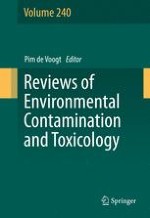2017 | OriginalPaper | Buchkapitel
Environmental Pollution, Toxicity Profile and Treatment Approaches for Tannery Wastewater and Its Chemical Pollutants
verfasst von : Gaurav Saxena, Ram Chandra, Ram Naresh Bharagava
Erschienen in: Reviews of Environmental Contamination and Toxicology Volume 240
Verlag: Springer International Publishing
Aktivieren Sie unsere intelligente Suche, um passende Fachinhalte oder Patente zu finden.
Wählen Sie Textabschnitte aus um mit Künstlicher Intelligenz passenden Patente zu finden. powered by
Markieren Sie Textabschnitte, um KI-gestützt weitere passende Inhalte zu finden. powered by
